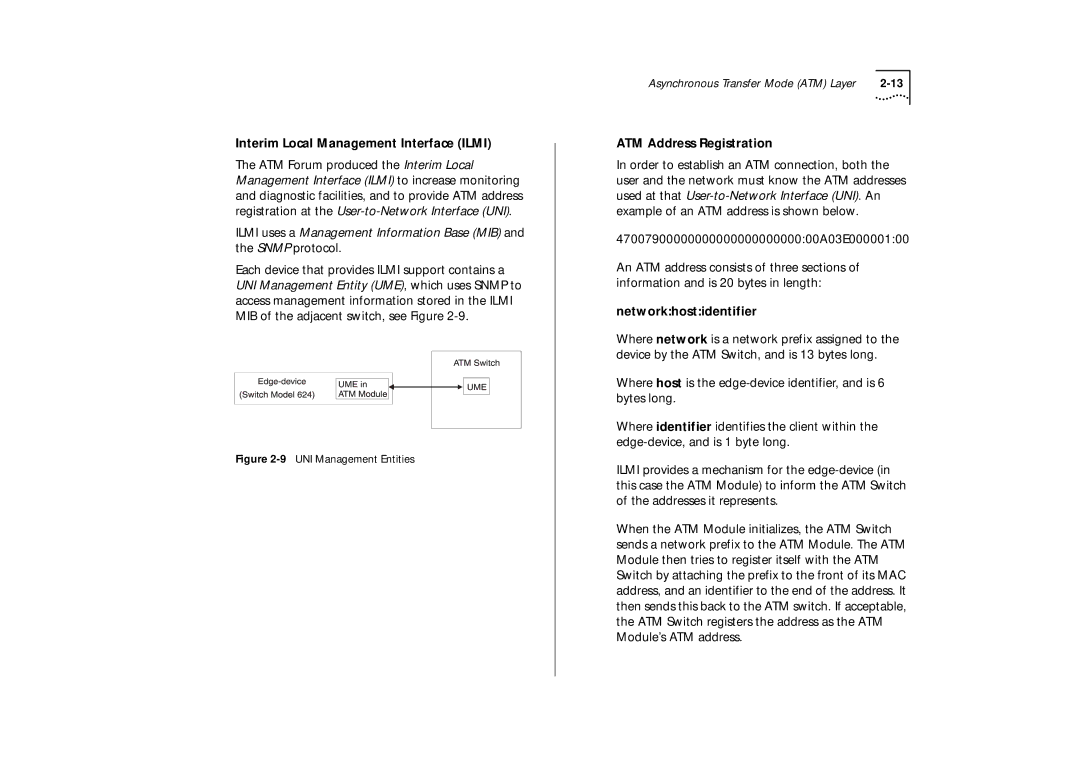
Interim Local Management Interface (ILMI)
The ATM Forum produced the Interim Local Management Interface (ILMI) to increase monitoring and diagnostic facilities, and to provide ATM address registration at the
ILMI uses a Management Information Base (MIB) and the SNMP protocol.
Each device that provides ILMI support contains a UNI Management Entity (UME), which uses SNMP to access management information stored in the ILMI MIB of the adjacent switch, see Figure
Figure 2-9 UNI Management Entities
Asynchronous Transfer Mode (ATM) Layer |
ATM Address Registration
In order to establish an ATM connection, both the user and the network must know the ATM addresses used at that
47007900000000000000000000:00A03E000001:00
An ATM address consists of three sections of information and is 20 bytes in length:
network:host:identifier
Where network is a network prefix assigned to the device by the ATM Switch, and is 13 bytes long.
Where host is the
Where identifier identifies the client within the
ILMI provides a mechanism for the
When the ATM Module initializes, the ATM Switch sends a network prefix to the ATM Module. The ATM Module then tries to register itself with the ATM Switch by attaching the prefix to the front of its MAC address, and an identifier to the end of the address. It then sends this back to the ATM switch. If acceptable, the ATM Switch registers the address as the ATM Module’s ATM address.
